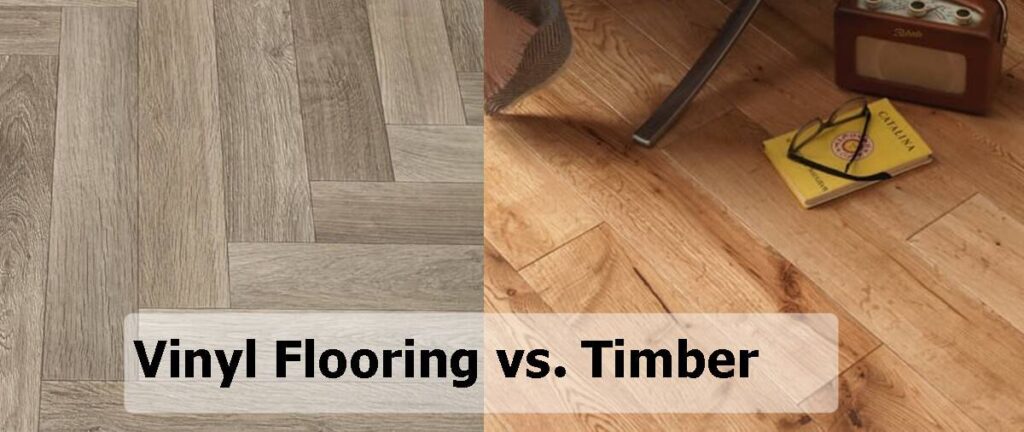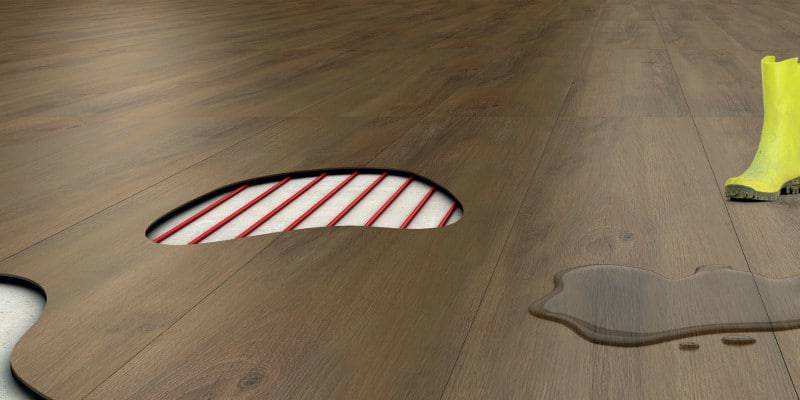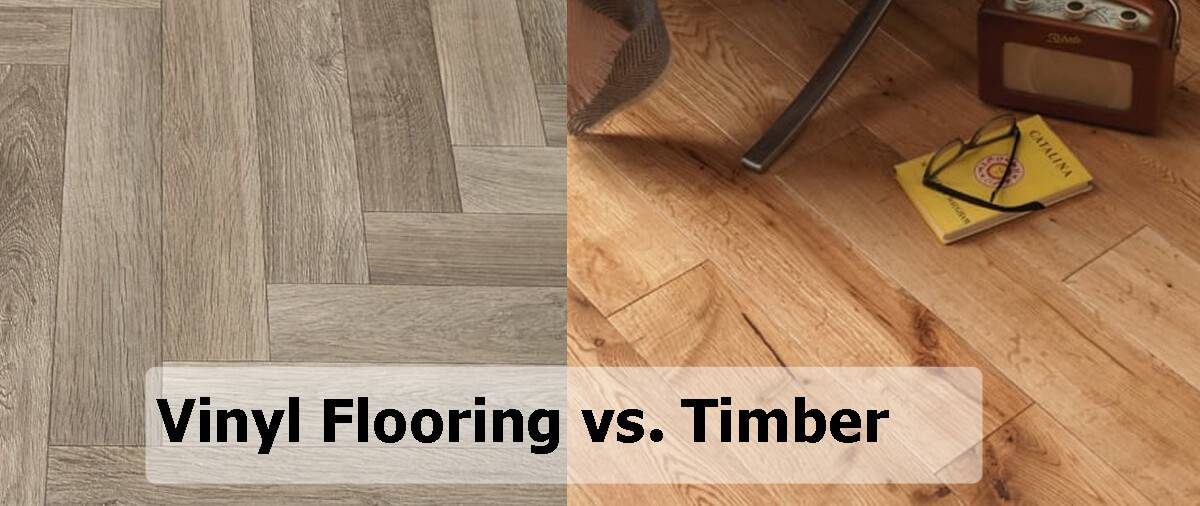Vinyl Flooring vs. Timber: There are many flooring options to consider, each with its own set of advantages and disadvantages. Vinyl and hardwood flooring are two of the most popular options.
Both materials are a popular choice for both residential and commercial spaces because they have a timeless aesthetic and a variety of styles to match any decor.
Their properties, maintenance requirements, and overall suitability for different environments differ significantly. We’ll go into a comprehensive comparison of vinyl and timber flooring to help you make an informed decision.
Deciphering the Vinyl and Timber Flooring Dichotomy: A Comprehensive Analysis
Navigating the realm of flooring options often presents homeowners with a captivating yet daunting array of choices.
Among the most celebrated contenders are vinyl and timber flooring, each captivating the hearts of discerning individuals seeking to elevate their living spaces with timeless elegance and enduring appeal.
While these two materials share a common aspiration to adorn homes with warmth and sophistication, they diverge in their inherent characteristics, maintenance requirements, and suitability for various environments.
Durability: A Tale of Two Materials
Vinyl flooring stands as a testament to enduring resilience, effortlessly weathering the onslaught of scratches, dents, and spills without compromising its pristine appearance.
Its inherent waterproofness renders it an indomitable force against moisture and spills, making it an ideal choice for high-traffic areas like kitchens and bathrooms.
In contrast, timber flooring, while inherently durable, demands meticulous care to preserve its integrity. Without proper sealing and maintenance, it can succumb to scratches, dents, and the destructive effects of water damage.
Maintenance: A Balancing Act of Effort and Reward
Vinyl flooring embraces simplicity, requiring minimal maintenance for its upkeep. A quick wipe with a damp mop or mild detergent suffices to restore its gleaming radiance.
Its scratch-resistant and stain-resistant properties minimize the need for frequent touch-ups, allowing homeowners to focus on enjoying their living spaces rather than tending to their flooring.
Timber flooring, on the other hand, demands a more hands-on approach. Regular cleaning and polishing are essential to maintain its natural beauty and prevent the appearance of blemishes. Moreover, it may require sealing or refinishing to address scratches or water damage, adding an additional layer of upkeep.
Appearance: A Canvas for Aesthetic Expression
Vinyl flooring offers a captivating spectrum of styles and designs, mirroring the allure of wood, stone, tile, and other materials. Its versatility extends to installation options, allowing homeowners to choose from planks, tiles, or sheets, catering to their aesthetic preferences and architectural constraints.
Timber flooring exudes a natural warmth and elegance, breathing life into spaces with its unique grain patterns and textures. Its authenticity and timeless appeal create a sense of connection to the natural world, adding a touch of rustic charm to any decor.
Moisture Resistance: A Battle against the Elements
Vinyl flooring reigns supreme in moisture-prone environments, its inherent waterproof nature rendering it impervious to spills, splashes, and even standing water.
This makes it an indispensable choice for kitchens, bathrooms, and basements, where water is a constant presence. Timber flooring, in contrast, struggles to withstand prolonged exposure to moisture. A moisture barrier is often recommended under timber flooring in damp areas to mitigate the risk of damage.
Cost: A Matter of Financial Considerations
Vinyl flooring typically carries a lower upfront cost compared to timber flooring, making it a more financially attractive option for many homeowners.
However, the choice between vinyl and timber flooring often extends beyond initial investment. Timber flooring, due to its natural materials and craftsmanship, offers a longer lifespan, potentially increasing its resale value over time.
Suitability for Different Environments
Vinyl flooring’s versatility shines through in its ability to adapt to a wide range of environments. From high-traffic areas to tranquil bedrooms and lively living rooms, vinyl flooring finds its niche, adding warmth and durability to any space. Timber flooring, while equally versatile, is best suited for warm and dry environments.
Its natural beauty thrives in living rooms, bedrooms, and home offices, where it can complement existing decor and add a touch of rustic charm. However, its susceptibility to moisture limits its practicality in kitchens and bathrooms, where additional protection is required.
Environmental Impact: A Responsible Choice
The production of vinyl flooring, while advancing in technology, still carries environmental implications due to the use of synthetic materials and energy-intensive manufacturing processes.
However, advancements are reducing its environmental footprint. Timber flooring, as a natural material, presents a positive environmental narrative. However, its production can contribute to deforestation and habitat loss if not sourced responsibly. Sustainable forestry practices are essential to mitigate environmental impact.
Ultimately, the decision between vinyl and timber flooring lies in the hands of the homeowner. If durability and moisture resistance are paramount, vinyl flooring emerges as a compelling choice.
For those seeking the timeless beauty and warmth of wood, timber flooring offers an unparalleled aesthetic experience.
Professional Table For A Ccomparison: Vinyl Flooring vs. Timber
| Feature | Vinyl Flooring | Timber Flooring |
| Durability | Extremely durable | Durable but requires more care |
| Maintenance | Low-maintenance (occasional wiping) | Requires regular cleaning, polishing, and sealing/refinishing |
| Appearance | Wide variety of styles and designs (planks, tiles, sheets) | Natural, rustic look with unique grain patterns and textures |
| Moisture Resistance | Waterproof and can withstand even standing water | Not waterproof and can be damaged by moisture |
| Cost | Typically less expensive upfront | More expensive upfront but can last longer |
| Suitability for Different Environments | High-traffic areas, kitchens, bathrooms, basements | Living rooms, bedrooms, home offices |
| Environmental Impact | Lower environmental impact | Higher environmental impact if not sourced and manufactured responsibly |
Vinyl Flooring vs. Timber FAQs:
Which is more durable?
Vinyl flooring is extremely scratch and dent resistant, while timber needs more care to avoid damage. However, high-quality timber flooring can last for decades with proper maintenance.
Which is easier to maintain?
Vinyl flooring is a clear winner here, requiring only occasional wiping. Timber floors need regular cleaning, polishing, and occasional refinishing.
Which is more affordable?
Vinyl flooring is typically cheaper upfront, but high-quality timber flooring can add value to your home and potentially last longer.
Can I get a wood look with vinyl?
Absolutely! Vinyl comes in a vast variety of styles, including realistic wood-grain patterns.
Does timber flooring offer more variety?
While vinyl boasts diverse styles, timber naturally offers unique grain patterns and textures for a more authentic look.
Which is warmer underfoot?
Timber flooring feels naturally warmer than vinyl, although some luxury vinyl options offer improved warmth and texture.
Is vinyl flooring good for kitchens and bathrooms?
Yes! Its waterproof nature makes it ideal for moisture-prone areas.
Can I install timber flooring in a basement?
Not recommended unless the basement is well-ventilated and moisture-controlled. Vinyl is a better choice here.
Is either eco-friendly?
Both can be! Look for sustainably sourced and manufactured options for either material.



